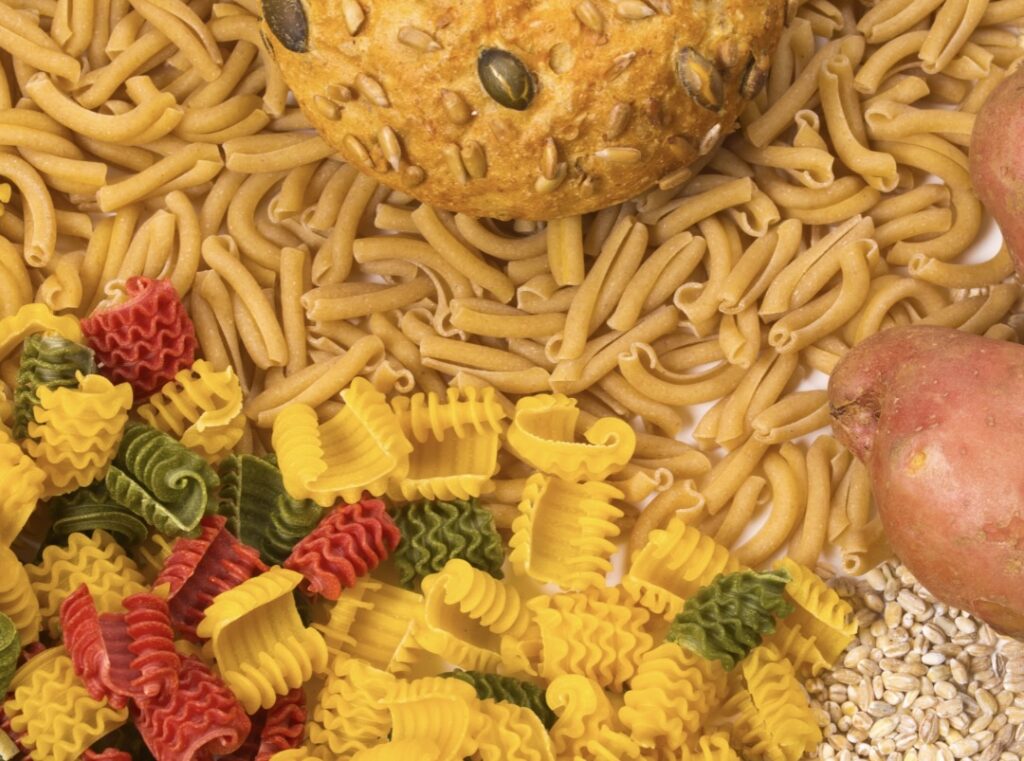This post on starches and grains is a continuation of my “Balanced Eating” post and dives more into why this delicious group is so beneficial for our body. You may have noticed that when I’m describing the different food groups for balanced eating, I do not call this group “carbohydrates”. Why? Because carbohydrates are found not only in grains and starches but also in fruits, vegetables and dairy products. Instead, I like to differentiate this group by referring to them as starches or grains.
What foods fall into this group?
- Pasta, noodles
- Quinoa, couscous, rice
- Oats, barley
- Breads, baked goods
- Potatoes, sweet potatoes
- Starchy vegetables like corn and peas
Whole Grains v Refined Grains
The American Diabetes Association has a great section that describes this difference between a whole grain and a grain that has been refined. To summarize, a whole grain refers to a food that contains all 3 parts of the grain (the bran, germ and endosperm) while refined grains include only the endosperm. What are we missing when we lose the bran and germ parts of the grain? The bran part of the grain contains the most fiber and most of the B vitamins and minerals and the germ contains a lot of nutrients including fatty acids and Vit E.
Why is this group of foods helpful for our bodies?
Probably the biggest piece that I focus on with this food group is the fiber it provides in our diet. Fiber is essential in promoting good digestive health, bowel regularity, has cholesterol-lowering properties and provides fullness and satiety in our meals. As we saw in the previous paragraph on whole grains, they also provide a slew of vitamins (most B-vitamins, Vit A, Vit E), minerals (iron, magnesium, phosphorous and selenium) and essential fatty acids.
While this food group may have gotten a bad rap years ago around the Atkins Diet and carb-cutting era, we know that starches and grains are an essential part of a balanced diet and provide our body with even more health benefits than are listed here. Not to mention that they are delicious! If you’re feeling that you have a hard time keeping this group in balance with the others, a registered dietitian is a good place to start. Reach out- I would love to help.
References:
“Types of Carbohydrates” by the American Diabetes Association

